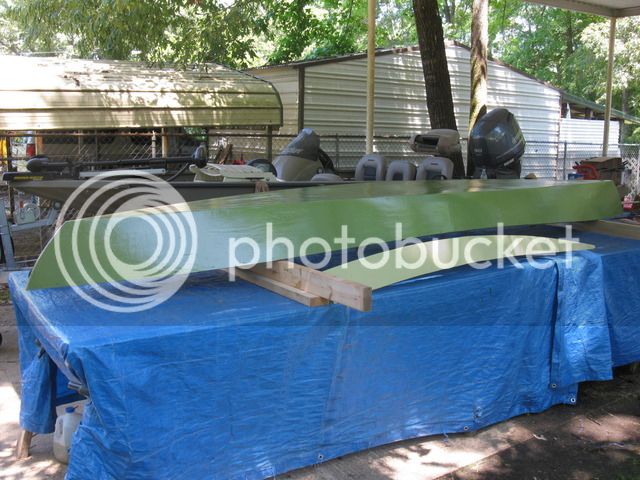Truck Boat #2
- Thread starter beekeeper
- Start date
You are using an out of date browser. It may not display this or other websites correctly.
You should upgrade or use an alternative browser.
You should upgrade or use an alternative browser.
Thanks Jack.
I use two 1/4" thick white oak strips laminated together to make each batter board. The first strip is screwed to the stem piece leaving it long at the top and bottom. This allows the second strip to be clamped and glued to it. After shaping, the excess can be sawed flush. The strips are hard to bend so I pre stress them to make for a better fit and less strain on the screws and glue. Soaking them would help but I wanted them to be completly dry before installing. Steam bending them would also work.
I made a form by tracing the shape of the stem onto a 2X4 and cutting it out on the band saw. I then clamped two strips onto the form and left them overnight.
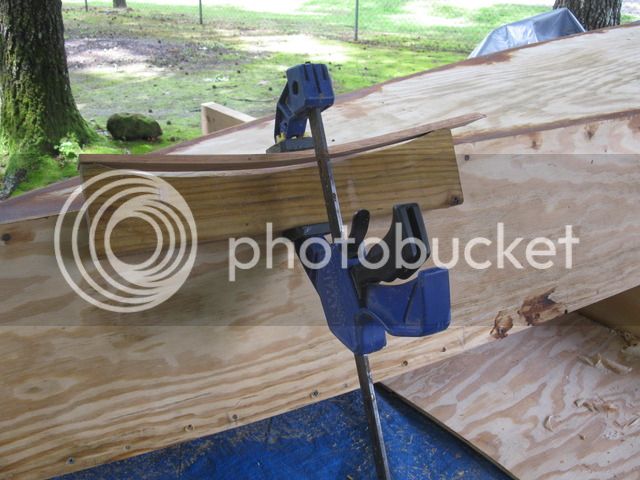
When released they returned to almost straight, but seemed not as stiff. After clamping the other two overnight I then clamped all four together. Before doing two at a time overnight it was much, much harder to bend all four together.
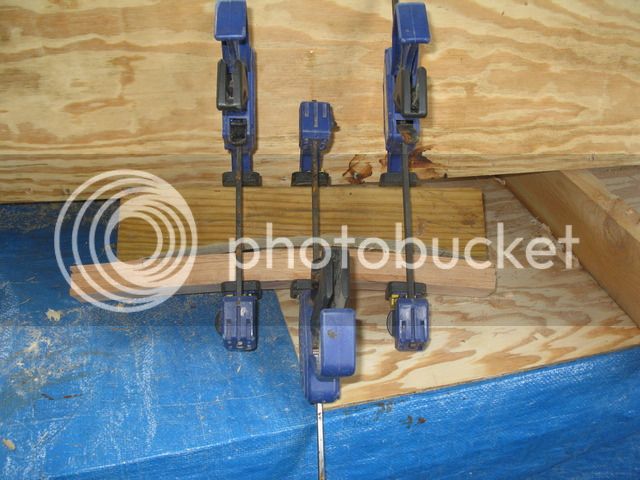
They will stay this way until I'm ready to install them. They should be "warped" enough to make bending and fitting easier
beekeeper
I use two 1/4" thick white oak strips laminated together to make each batter board. The first strip is screwed to the stem piece leaving it long at the top and bottom. This allows the second strip to be clamped and glued to it. After shaping, the excess can be sawed flush. The strips are hard to bend so I pre stress them to make for a better fit and less strain on the screws and glue. Soaking them would help but I wanted them to be completly dry before installing. Steam bending them would also work.
I made a form by tracing the shape of the stem onto a 2X4 and cutting it out on the band saw. I then clamped two strips onto the form and left them overnight.

When released they returned to almost straight, but seemed not as stiff. After clamping the other two overnight I then clamped all four together. Before doing two at a time overnight it was much, much harder to bend all four together.

They will stay this way until I'm ready to install them. They should be "warped" enough to make bending and fitting easier
beekeeper
In my mind's eye, I see a primitive boat builder doing something similar. He has no steel clamps. So, he uses cordage (roots of spruce and/or willow that have been soaked, and then twisted together for strength.). Tension is built into the cordage by twistng with a stick, in the manner of a tourniquet, sometimes called a Spanish windlass.
The primitive boat builder raises his head. Looking around him, he squints, and peers forward into his future - and our present. Smiling, he waves. Speaking words that he doesn't understand, but somehow knows that one is listening who will know what is being communicated. "Nice work, JD."
The primitive boat builder raises his head. Looking around him, he squints, and peers forward into his future - and our present. Smiling, he waves. Speaking words that he doesn't understand, but somehow knows that one is listening who will know what is being communicated. "Nice work, JD."
mike said:Hmmm........
Methinks that "primitive boat builder" might have been Jack in his youth. :shock: :shock: :shock:
(running away fast now!)
Mike
:roll: The "Spanish windlass" came along later in Jack's life. In his youth stone and fire was the method of choice for boat building.
His recollection of how the first batter boards were shaped is pretty accurate, considering how long it has been a few errors in his recollections is understandable. :wink:
Fascinated by the historical aspects of this little known subject I wanted to know more. Looking in my history book (the one I tell the grandkids stories from) the roots used were actually cypress and willow, not spruce. Story goes that Francisco Collel was the commandant of the Spanish settlement Galvez, West Florida( now Louisiana) in 1779. On his days off he liked to paddle and explore the rivers and swamps nearby. One day while paddling on the Amite River he ventured up a tributary and made a very important discovery. He stumbled upon a unknown (then and now) primitive tribe of native people. That is where Jacks account kicks in. The builder was using the roots and stick to bend the wood and Francisco called it a "Spanish windlass". It was such an important discovery the tributary was latter named after Francisco Collel. They misspelled his name but It is called Colyell Bay.
The most interesting part of this history lesson that Jack started is not the unknown primitive boat builder, nor the fact that Jack knew about Francisco naming the windlass but the "rest of the story. Seems one of Francisco's great, great something or the other granddaughters married and passed this story to her son, Irwin Clamp. I'm not sure what relevance that is but it was noted he has made a lot of money from it. I guess he owes Jack for keeping history alive. :lol:
beekeeper
JD is my Granpa. I'm proud of him. He was born in a log cabin that he built himsel. Ne told me so.
texastom said:She's pretty. I like the curved stem.
Thanks, I like them also but they are more work. On this boat they led to "lots" more work for me.
I attempted to attached the batter boards with construction glue because in the past I had problems with other glue on the stressed white oak strips.
It did not hold so I fastened them with screws. What I should have done to start with.
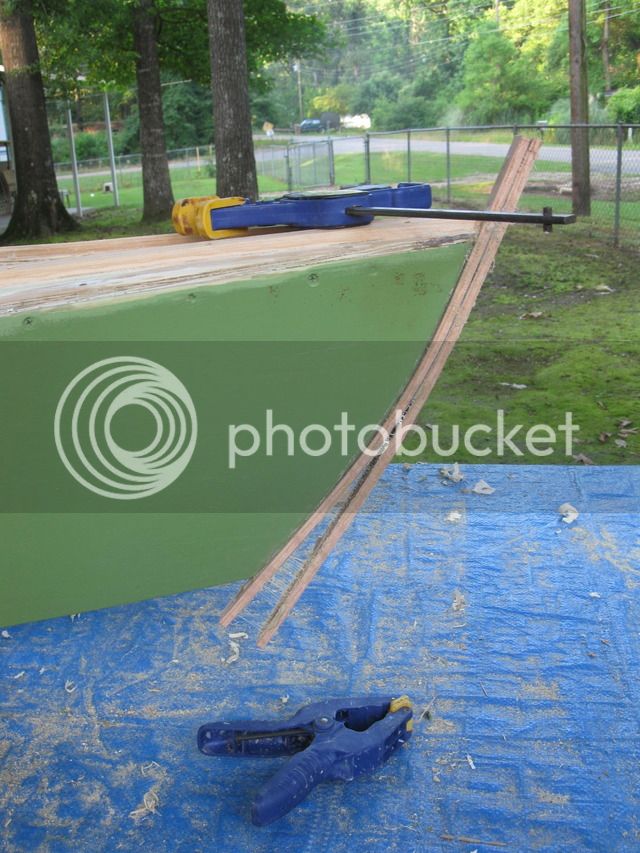
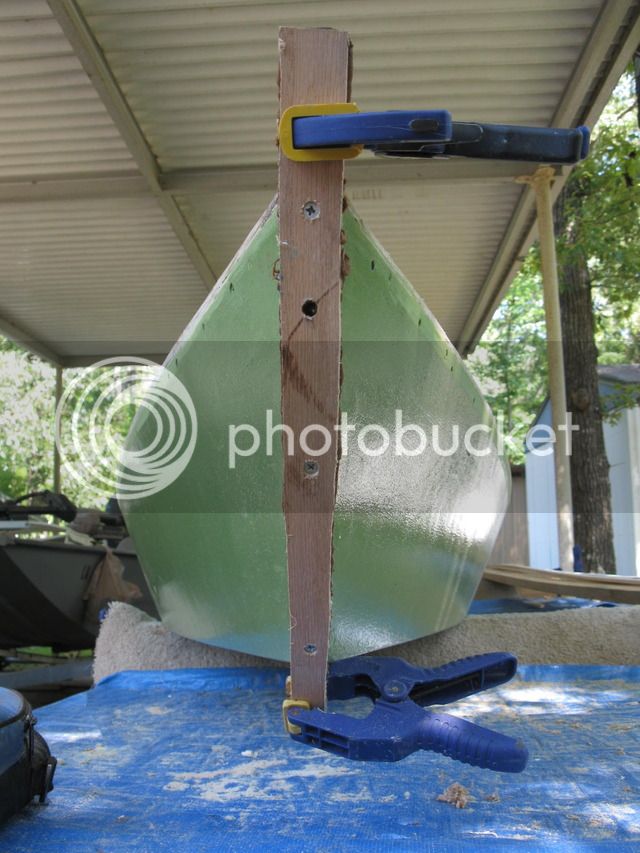
beekeeper
The rest of the story, short version:
Finishing and fitting the stems scratched the paint and they needed painting also, so the boat had to be sanded and repainted. The bottom had to be painted with the graphite so it was not much extra work.
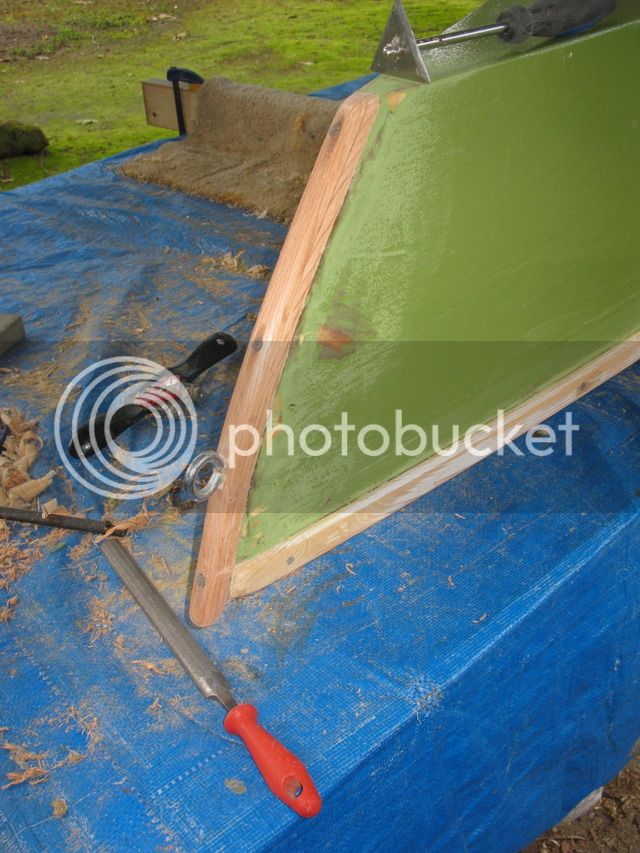
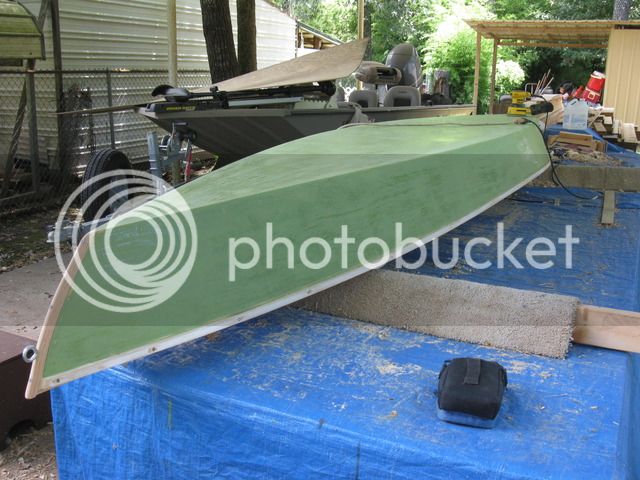
For the bottom protection I used a product I found at Academy Sports. It is "Goop" Coat It and contains epoxy, graphite, and ceramic powder. It went on easy, finished smooth, appears to be very hard and slippery.
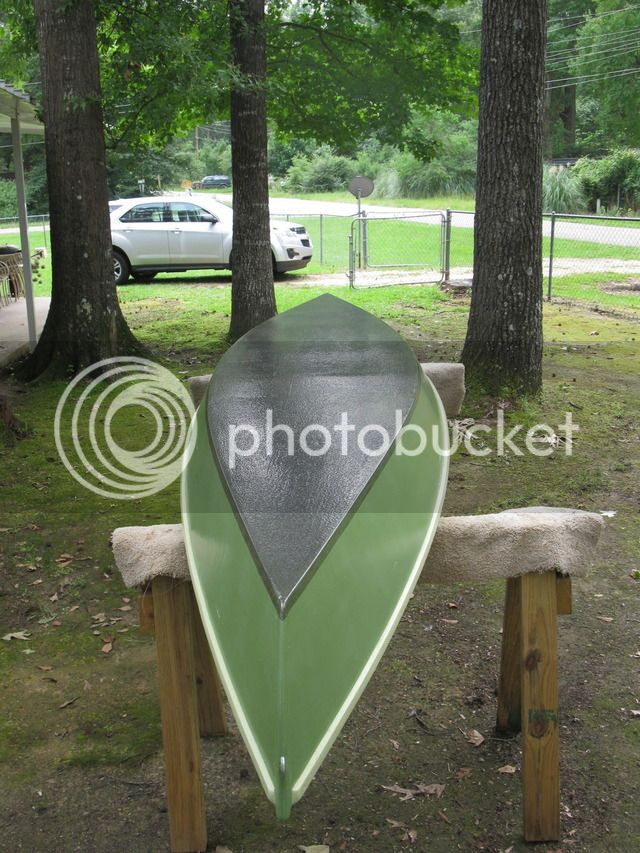
Long story, short, It is finished and I even got it wet a little, but no fish slime :cry: yet.
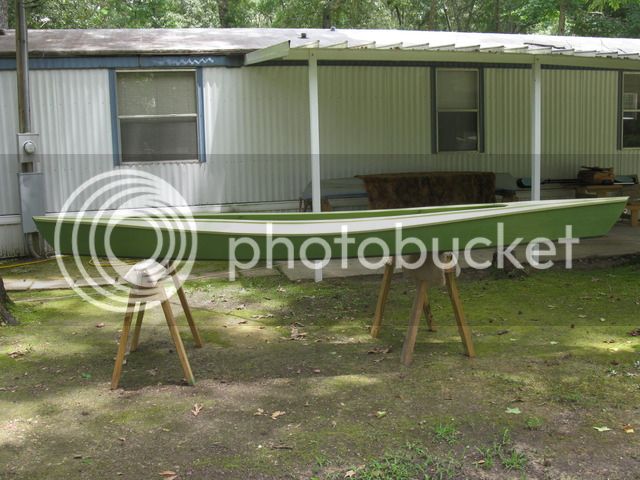
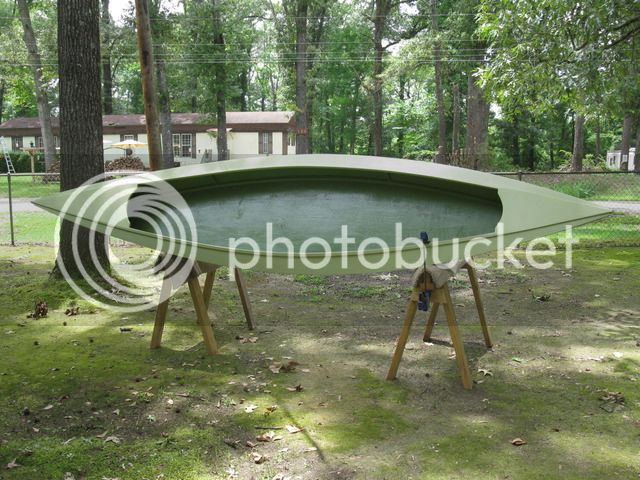
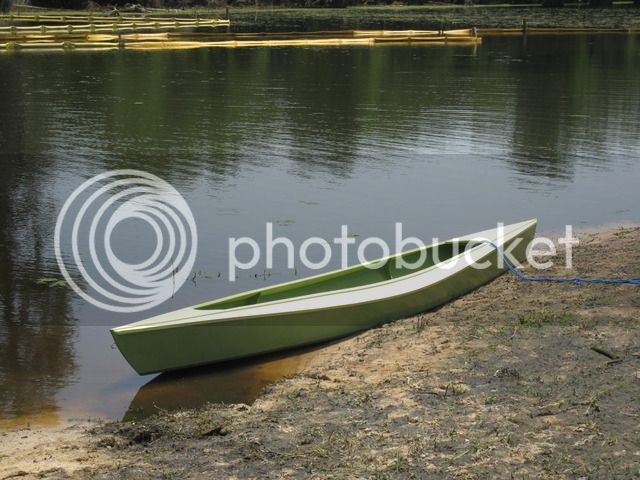
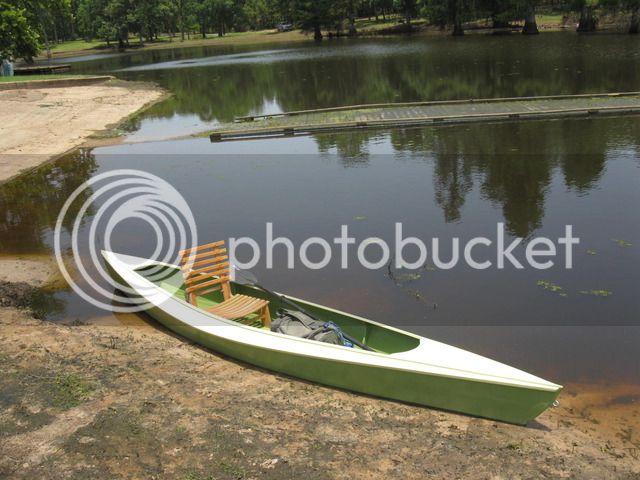
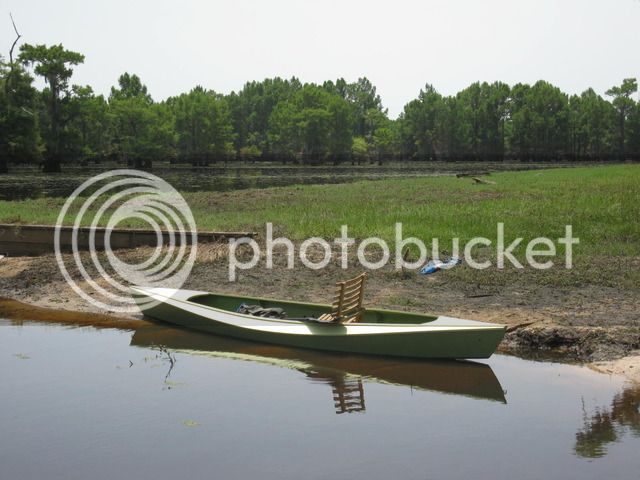
beekeeper
Finishing and fitting the stems scratched the paint and they needed painting also, so the boat had to be sanded and repainted. The bottom had to be painted with the graphite so it was not much extra work.


For the bottom protection I used a product I found at Academy Sports. It is "Goop" Coat It and contains epoxy, graphite, and ceramic powder. It went on easy, finished smooth, appears to be very hard and slippery.

Long story, short, It is finished and I even got it wet a little, but no fish slime :cry: yet.





beekeeper
Can't help with the color (color blind here) but this is the link:Kayak Jack said:Goop Coat. Is it in a can? What color of container am I looking for?
http://www.academy.com/shop/pdp/amazing ... it&Ntk=All
beekeeper
Bee,
How many square feet will one can cover. I have a friend who just bought a 700 hP turbocharged airboat. He gathers alligator eggs, hatches them, and sells the alligators. This stuff on the bottom of the airboat would probably cut his fuel consumption.
You built a good looking boat. Congrats.
Bob
How many square feet will one can cover. I have a friend who just bought a 700 hP turbocharged airboat. He gathers alligator eggs, hatches them, and sells the alligators. This stuff on the bottom of the airboat would probably cut his fuel consumption.
You built a good looking boat. Congrats.
Bob
Thanks Bob for the compliment.
The can (2lb. kit) said "up to 20sq. ft. I used a cheap foam roller and it took all to cover the pirogue bottom, about 14sq. ft. give or take.
A quality finish foam roller would probably stretch it some. An 8lb. kit is also available.
The finish seems harder than the standard epoxy/graphite mix I used before. The graphite does not seem to rub off as much and it only required one coat for a fair finish. The boat paddled well with little friction. I also waxed the hull with a boat polish containing Teflon.
It made for a slick finish over the epoxy paint and the graphite bottom, and added some UV protection. Seemed to help with washing the crud off.
Time and usage will determine the value of all components and features, but at this time I'm pleased.
beekeeper
The can (2lb. kit) said "up to 20sq. ft. I used a cheap foam roller and it took all to cover the pirogue bottom, about 14sq. ft. give or take.
A quality finish foam roller would probably stretch it some. An 8lb. kit is also available.
The finish seems harder than the standard epoxy/graphite mix I used before. The graphite does not seem to rub off as much and it only required one coat for a fair finish. The boat paddled well with little friction. I also waxed the hull with a boat polish containing Teflon.
It made for a slick finish over the epoxy paint and the graphite bottom, and added some UV protection. Seemed to help with washing the crud off.
Time and usage will determine the value of all components and features, but at this time I'm pleased.
beekeeper
Nice looking craft, Bee. She should be real comfortable to fish out of. What did the weight come out to be?
Joey I have not weighed it. It feels heavier than truck boat #I. As you know it takes a lot of attention to a lot of details to build light and still have a serviceable boat. Choice of wood and the size of the boat are probably biggest considerations. This was a learning project about form and some design changes. Smaller breasthooks/decks and a lighter framing wood would have helped a lot. They turned out larger than my original plans(thoughts, actually) because after changing the way I built them I could not reduce them. Could have used WRC instead of the cut off bargain ben pine boards but I did not want to invest any more into it. It may just be my perception that it is heavier because it does not rest on my shoulder as comfortably as the other boat. The first boat has a wider combing and carries better. My be a design change consideration for the next time.
The boat fishes very well. The only issue I had was it gliding past my target area. The fair and very smooth wetted area seems to make a difference.
beekeeper
The boat fishes very well. The only issue I had was it gliding past my target area. The fair and very smooth wetted area seems to make a difference.
beekeeper
A longer glide is good.
For carrying on a shoulder, a guy could glue on a carefully located piece of closed cell foam on the inboard edge of the coaming. It's more comfy on aging shoulders.
For carrying on a shoulder, a guy could glue on a carefully located piece of closed cell foam on the inboard edge of the coaming. It's more comfy on aging shoulders.



